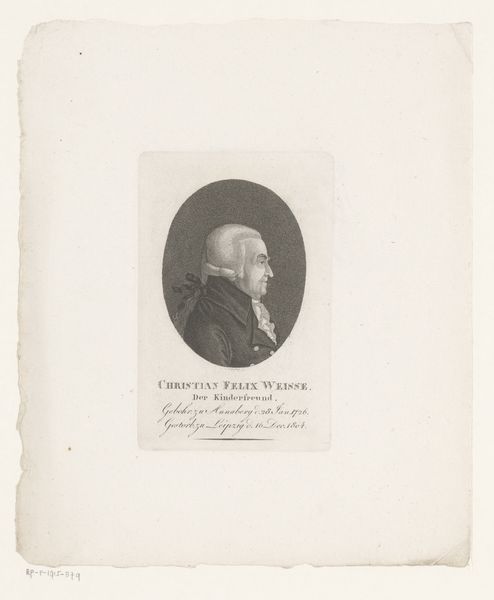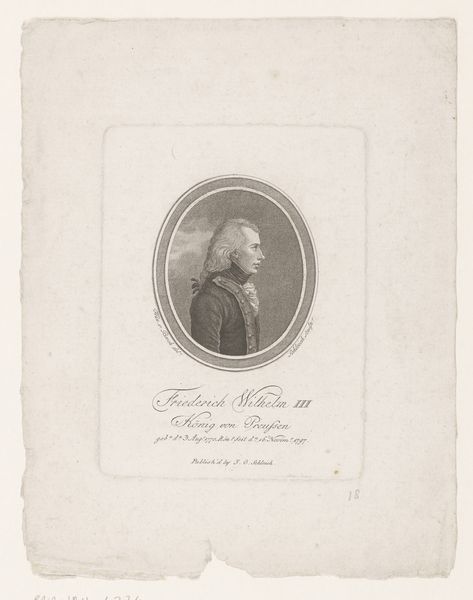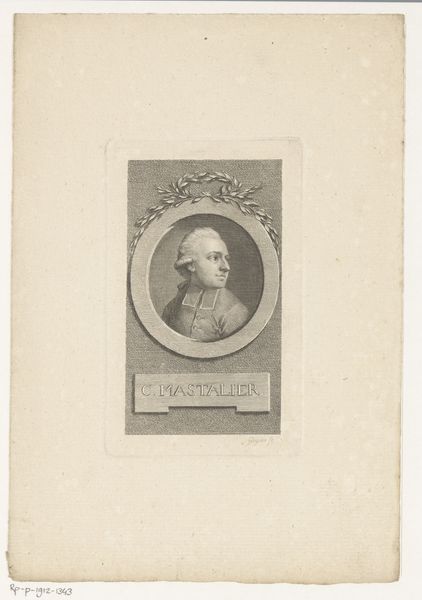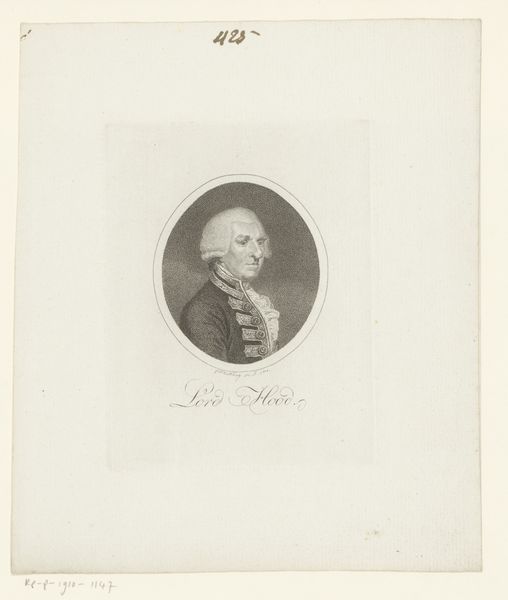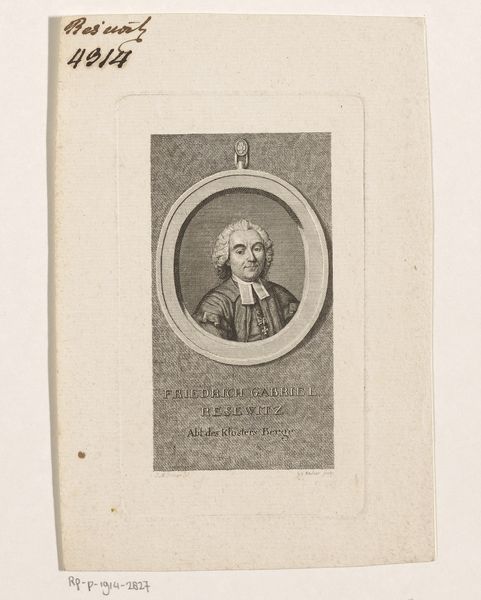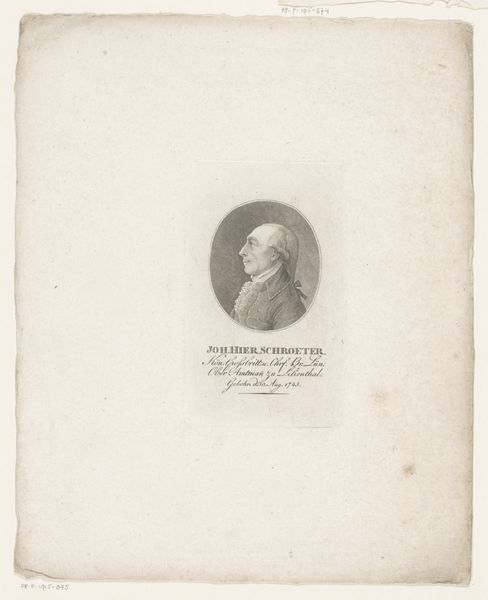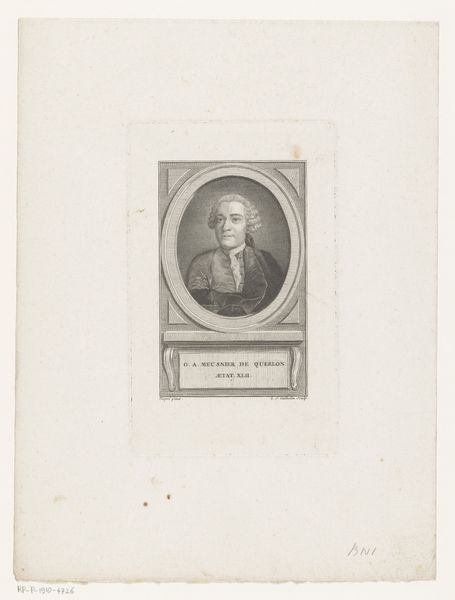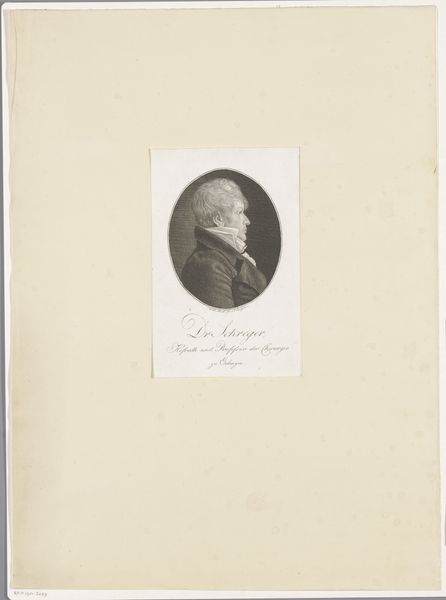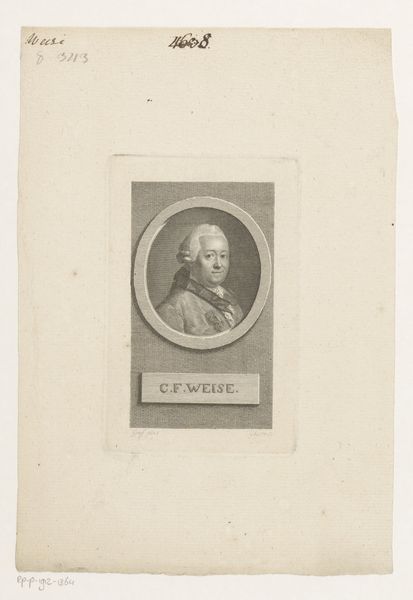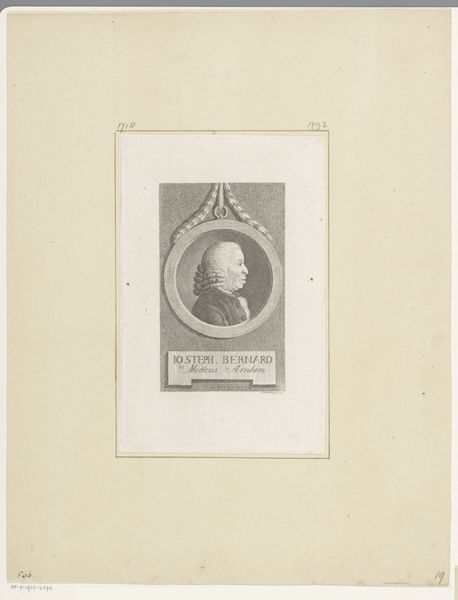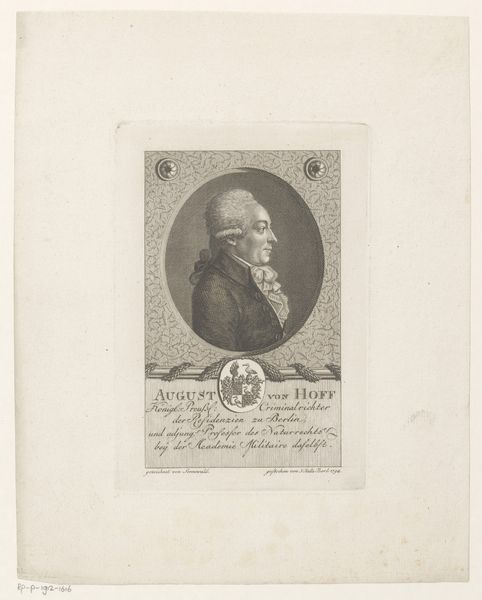
print, engraving
#
portrait
# print
#
old engraving style
#
engraving
#
realism
Dimensions: height 134 mm, width 88 mm
Copyright: Rijks Museum: Open Domain
Editor: Here we have "Portret van John Hunter," made between 1775 and 1834 by Konrad Westermayr. It's an engraving, a print. It feels very formal, but there's also a kind of austere directness about it. What can you tell me about how this piece fits into its time? Curator: Well, portrait engravings like these served a crucial function beyond mere likeness. How might they be related to power and social status, especially considering Hunter's role as an "Engl. Schiffs. Capitan" – an English ship captain? Editor: I guess having your portrait circulated like this was a way of solidifying authority? Like creating a visual symbol of power? Curator: Precisely. And who typically had access to this kind of portraiture at the time? Consider also the context of colonial expansion – what was the relationship between exploration, maritime power, and portraiture during this period? Editor: So, the engraving isn't just a neutral depiction; it’s participating in a visual language that reinforces a social hierarchy? Perhaps even legitimizing colonial activity through the visual representation of its key figures? Curator: Absolutely. These images played a significant role in constructing and maintaining power structures. Even the seemingly straightforward style of realism works to create a sense of authenticity and trustworthiness. Do you see the potential issues in assigning terms like “realism” without considering the biases inherent in representation? Editor: Definitely! I see now that even though it’s a ‘realistic’ portrait, it’s far from being objective. The piece is deeply entangled in power dynamics of the era. Thanks for opening my eyes to the historical context. Curator: My pleasure. Remembering that artworks can reflect and reinforce complex historical power dynamics gives us the chance to question whose stories are being told.
Comments
No comments
Be the first to comment and join the conversation on the ultimate creative platform.

